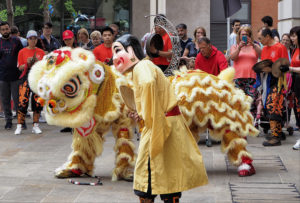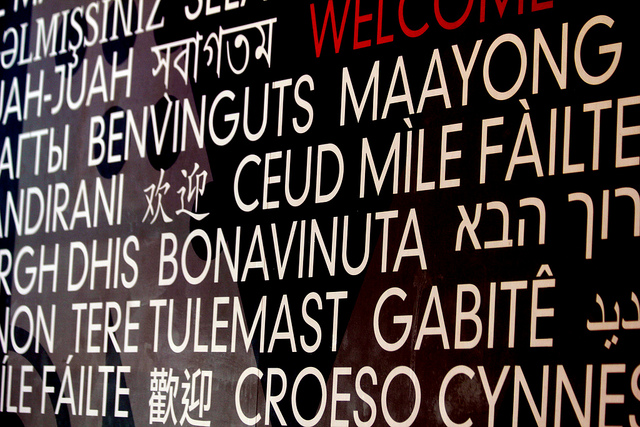You’ve been working on software that has worldwide appeal and are finally ready to turn it into a reality. Unfortunately, you are not fluent or even close to fluent in any markets outside the United States. How are you going to launch your app in China or Germany if you only know English?
Simple: with something called localization.
Translation and Localization
Localization does much more than translating words from one language to another; it adapts your application’s language and design to fit the cultural and societal norms for any given country, building credibility and trust within that market.
A simple translation of the words on the screen, on the other hand, will leave your app flawed and poorly designed.
That’s because a translation is only part of what makes your app successful outside your native country. Localization takes it to the next level. There are three key reasons that localization will make or break the success of your app with foreign users:
- Design
- Proper Translations
- Cultural Connections
Localization and Design
Getting your software ready for users in another country means perfecting the design. A high quality and intuitive layout are crucial for meeting user expectations of structure, navigation, and ease of use.
You may think that design has nothing to do with translation, but you have to consider that a translation often changes the length of words and sentences. Some languages use much more or fewer words per sentence than English.
So when you optimize for English and you’re translating into Chinese, you end up with a lot of extra white space.
Click on infographic to show data
Created using Visme. An easy-to-use Infographic Maker.
To avoid having a flawed and difficult interface for your software, localization adjusts the layout in addition to translating the words.
For example, software marketed in Arabic need more than a translation. Arabic is read right to left, so design modifications need consideration as well.
Another example would be the way dates are written. While it may seem like a minuscule detail, it can have a big effect on the way information’s portrayed. In English, dates are written: month, day, year; compared to Germany, where dates are written: day, month, year, or China, where dates are written: year, month, date.
Making sure these smaller aspects are correct lends to the authenticity of your content, often leaving consumers feeling more comfortable and confident in your product.
Localization and Search
Proper localization for the web is different from strict translation in one special way. There may be several correct translations for a word, but only one of them is ever used by web users to search for information in their local search engine.
Even in English this makes sense. One company selling automobile merchandise discovered that people searching for car parts search “Corvette” whereas people searching for T shirts, models, or other mementos, often used the word “Vette.”
That means that in order to properly localize a website, first you must conduct thorough multilingual keyword optimization.
Localization and Proper Translation
Tossing your app into Google Translate is never a good idea. Google translate does not understand context, or design, or the fact that there might be several spellings for one word.
Language, like Chinese, has at least 20 homophones or homonyms for every word. The chances that Google Translate will pick the correct version of the same word is unlikely. Working with human experts in localization (not computers) is one way to ensure appropriate context and word choice are chosen every time.
Localization and Cultural Connections
Breaking into a worldwide market and connecting to audiences with vast cultural and social differences is more than just translation. According to a leader in multilingual websites, MotionPoint:
“Utilizing localization can go beyond word choice. Savvy marketers often customize their multilingual websites to highlight special holidays, celebrations or customs in global markets. This illustrates a fluency in a local market’s culture, which quickly generates customer trust.”
Highlighting local and regional holidays, traditions, and capitalizing on up and coming social trends gives your brand a uniquely approachable voice. By showing you embrace the local culture and trends, users will accept and trust your product.

However, cultural connections mean more than advertising for holidays and regional celebrations. Great localization adapts your text for different dialects within regions of your target market. By focusing on the fluctuations in phrasing from one region to the next, your brand builds an even greater level of authenticity.
Compare that to translation, which simply substitutes one word for another.
Translate Structured Authoring Content Into Other Languages
Effectively localizing structured content for elearning materials and user guides in the DITA XML format can be tricky. Work with a DITA XML Localization Company with decades of technical documentation translation experience.
Let us translate your DITA content
Localization and Credibility
Localizing your content will drive user engagement with your company. Becoming a trustworthy global brand is tough, but to make a true connection to your global audience you need to demonstrate you understand them.
If you’re are not localizing your international content you are marginalizing parts of your target audience. After you’ve worked tirelessly on your software, don’t let it fail due to poor translation and subsequent design flaws. Work with a team of experts in the local language to deliver truly authentic content.
At Ivannovation, we pair your needs with local experts and translators who know and understand the culture of your target market.
Contact us today to find out how our localization experts can help you communicate the quality and credibility of your application to other countries, and ultimately make it a success.
Photo credit: quinn.anya via Visualhunt/CC BY-SA



